Author: Phil Rusher
Brewers have been producing beer with wood character for eons, in fact the first beers ever intentionally produced were almost certainly fermented in wooden vessels. Nowadays, the most common material to ferment in is stainless steel, and brewers looking to add the essence of wood, usually some form of oak, often do so once fermentation is complete. On the commercial scale, brewers tend to rely mostly on transferring the fermented beer to oak barrels where they pick up the desired characteristics over a period of aging.
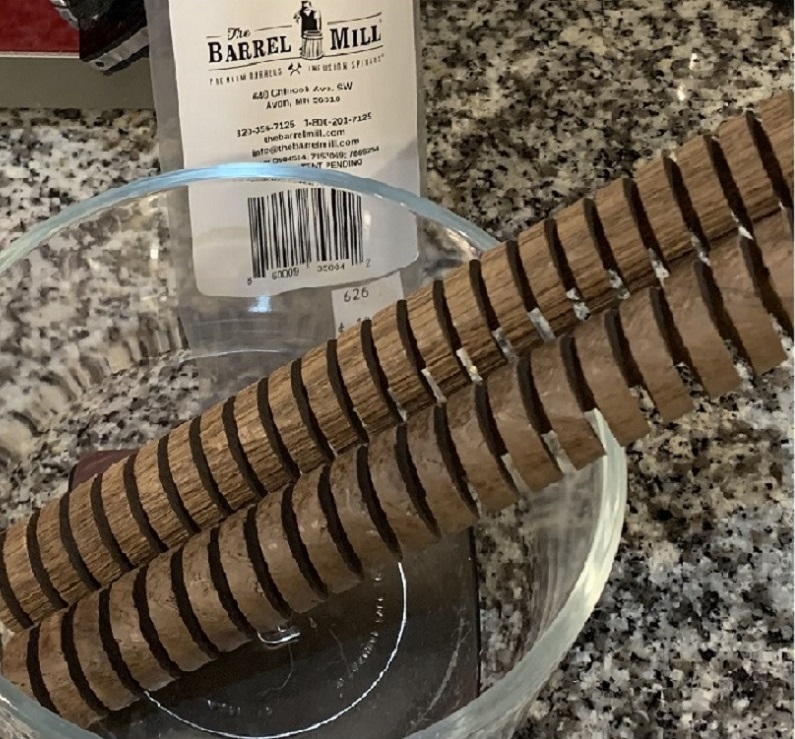 Other wood options exist for those who aren’t interested in storing barrels or tend to make smaller batch sizes. Invented by Russell Karasch of The Barrel Mill as a means of conveniently imparting oak character to beer and wine, Oak Infusion Spirals are relatively short lengths of different types of oak with various levels of toast that can
Other wood options exist for those who aren’t interested in storing barrels or tend to make smaller batch sizes. Invented by Russell Karasch of The Barrel Mill as a means of conveniently imparting oak character to beer and wine, Oak Infusion Spirals are relatively short lengths of different types of oak with various levels of toast that can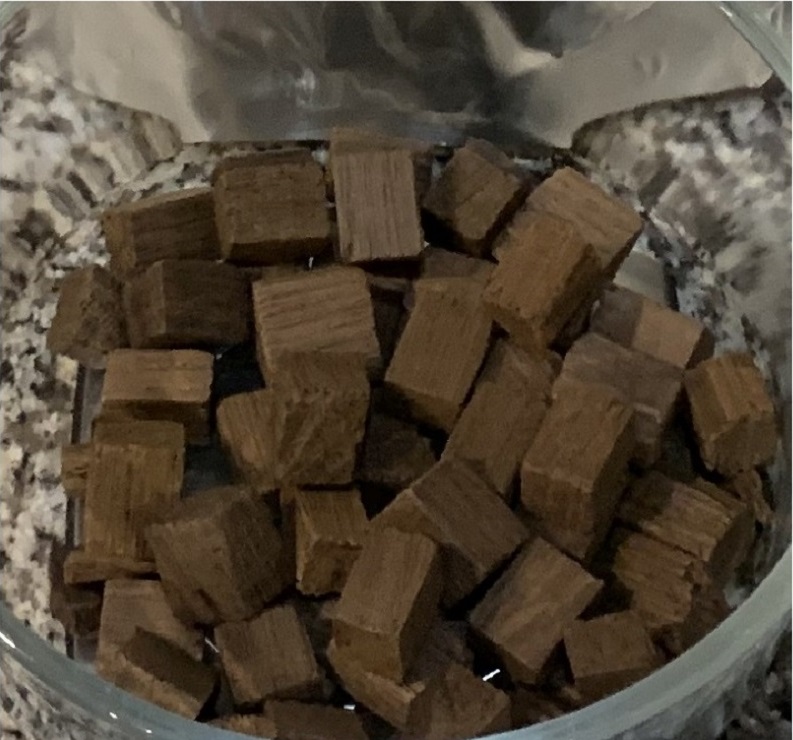 easily be added to the fermenter, the spiral cut maximizing surface area and thus contact with the beer. Another popular option are oak cubes, which are made from barrel staves that have been dried over time before being chopped into small cubes.
easily be added to the fermenter, the spiral cut maximizing surface area and thus contact with the beer. Another popular option are oak cubes, which are made from barrel staves that have been dried over time before being chopped into small cubes.
I’m definitely a fan of wood-aged beers, and while my experience brewing them is relatively limited, I’ve relied mostly on cubes, to good effect. Admittedly, my thinking had been that oak is oak, and that the form it came in likely didn’t have much of an impact. After hearing differing opinions from other brewers, many claiming positive results using spirals, I decided to test it out for myself.
| PURPOSE |
To evaluate the differences between beers made with either oak spirals or oak cubes.
| METHODS |
While any style can be designed to work well with oak character, it’s most common in bigger beers, which is why I went with an American Barleywine for this xBmt.
…at the Pace of an Entmoot
Recipe Details
| Batch Size | Boil Time | IBU | SRM | Est. OG | Est. FG | ABV |
|---|---|---|---|---|---|---|
| 5.5 gal | 60 min | 60.2 IBUs | 14.0 SRM | 1.093 | 1.019 | 10.0 % |
| Actuals | 1.093 | 1.013 | 10.8 % | |||
Fermentables
| Name | Amount | % |
|---|---|---|
| Lamonta American-style Pale Malt (Mecca Grade) | 12.5 lbs | 66.01 |
| Metolius Munich-style Malt (Mecca Grade) | 5 lbs | 26.4 |
| Caramel Malt - 120L (Briess) | 7 oz | 2.31 |
| Brown Sugar, Light | 1 lbs | 5.28 |
Hops
| Name | Amount | Time | Use | Form | Alpha % |
|---|---|---|---|---|---|
| HBC 682 | 50 g | 60 min | Boil | Pellet | 12 |
| Equinox (HBC 366) | 50 g | 5 min | Boil | Pellet | 12.9 |
Miscs
| Name | Amount | Time | Use | Type |
|---|---|---|---|---|
| Medium Toast US Oak Spirals OR Cubes | 104.00 g | 4 days | Secondary | Flavor |
Yeast
| Name | Lab | Attenuation | Temperature |
|---|---|---|---|
| House (A01) | Imperial Yeast | 74% | 62°F - 70°F |
Download
| Download this recipe's BeerXML file |
My first order of business was collecting the RO water for this 10 gallon/38 liter batch, which I did a few days ahead of time.
A day before to brewing, I made a single large yeast starter of Imperial Yeast A01 House.
Later that day, I weighed out and milled the grain in preparation for the following morning.
On brew day, I heated the previously collected RO water, which was adjusted to my desired profile, then mashed in to achieve my desired temperature.
While waiting on the mash, I prepped the kettle hop additions.
When the 60 minute mash rest was complete, I collected the sweet wort then proceeded with a 60 minute boil, adding hops added at the times stated in the recipe.
When the boil was finished, I took a refractometer reading showing the wort hit my target 1.093 OG then evenly split it between two sanitized Brew Buckets.
The filled fermenters were placed in my chamber controlled to my desired fermentation temperature of 68°F/20°C, at which point I split the yeast starter between them.
After 11 days, it was time to add the wood. Per the crew, it was decided to keep the weight of each type of oak constant between the batches. Being that the mass of two oak spirals was 104 grams, I used an equal amount of cubes. To reduce the risk of contamination, I prepared the oak by boiling it for 15 minutes.
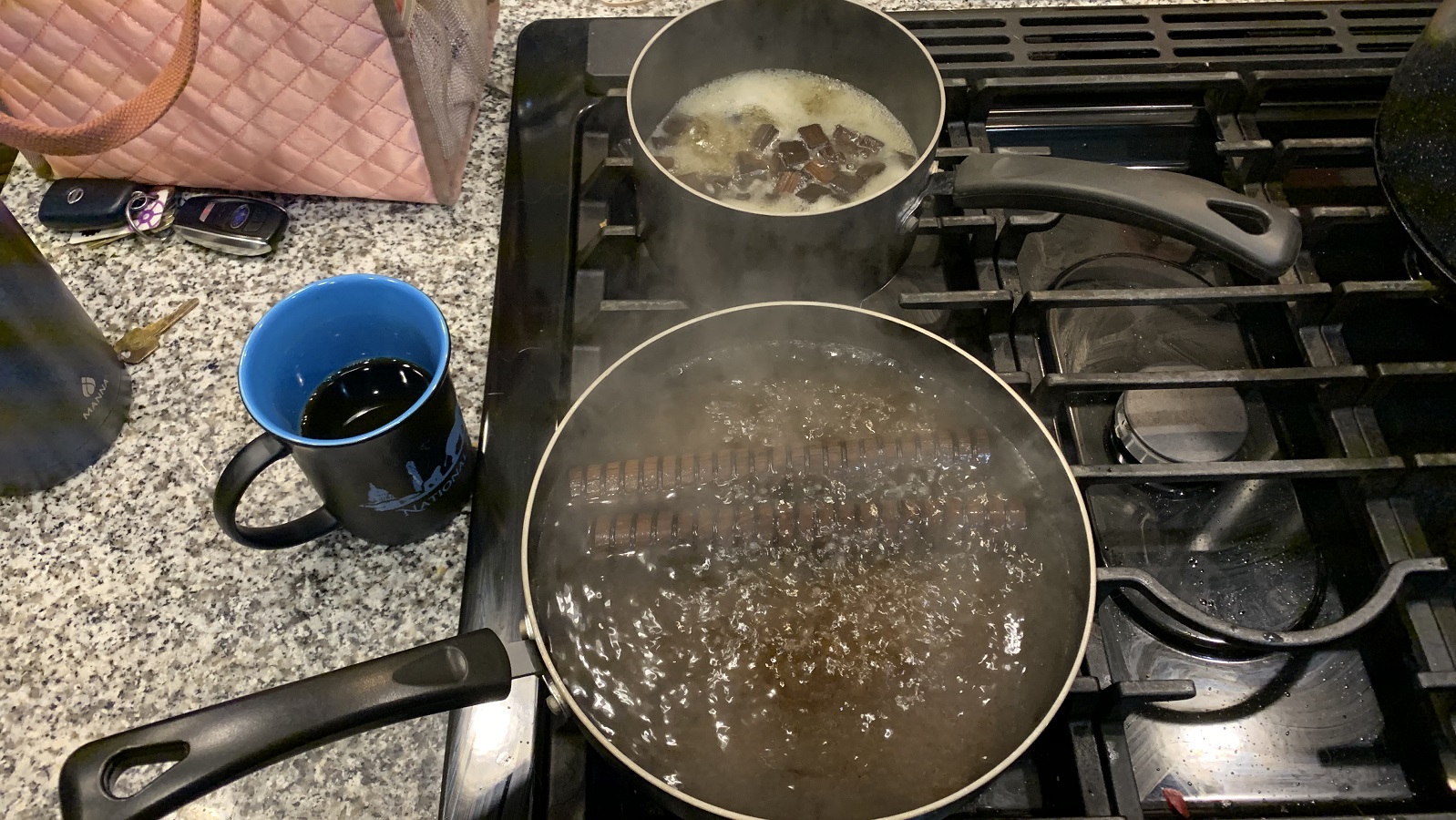
With the wood sanitized and separated from the water, I gently added them to the beers.
I let the beer remain in contact with the oak for 6 weeks, at which point I took hydrometer measurements confirming both had reached the same FG.
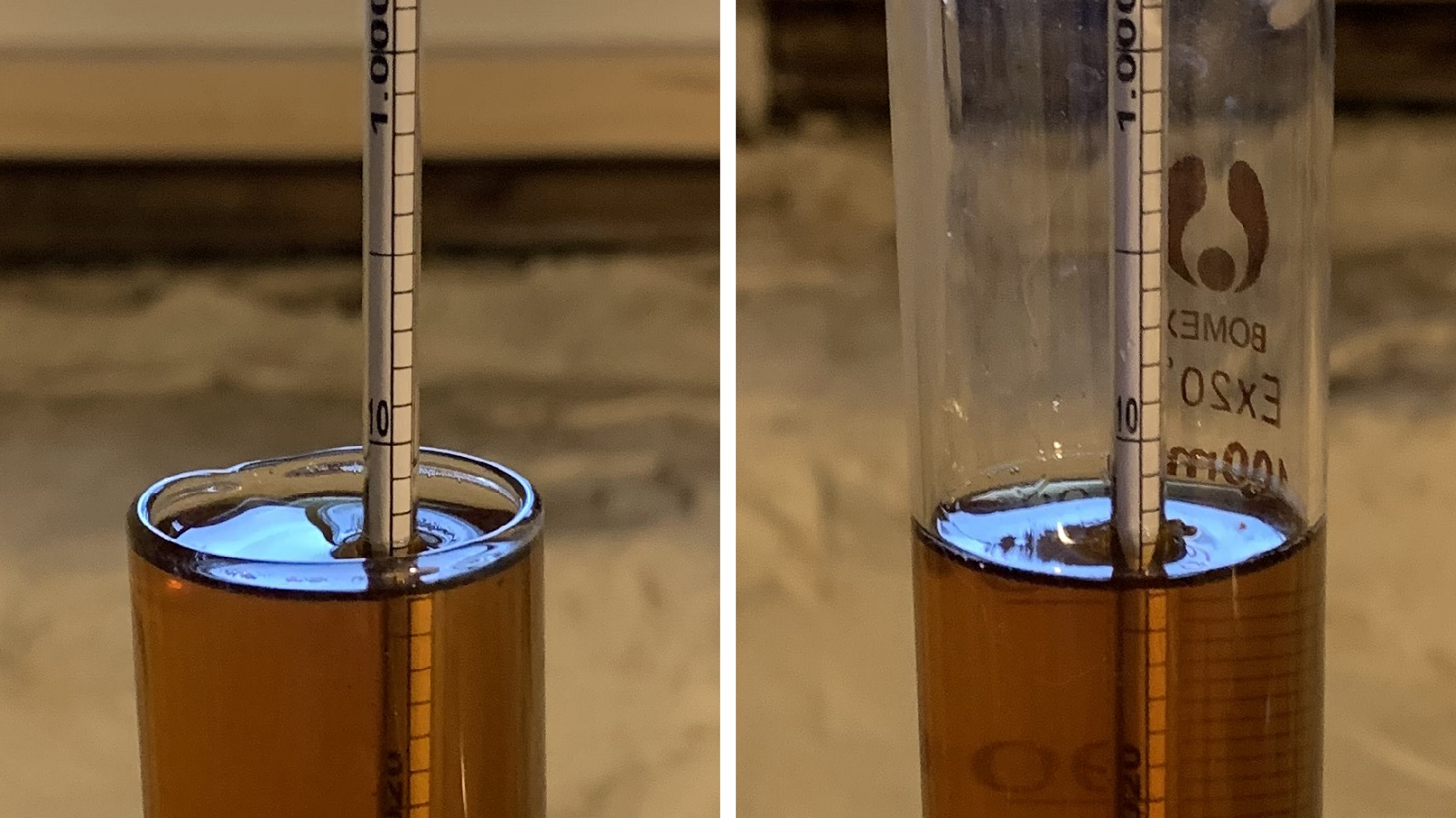
After sufficient aging on wood, I proceeded with racking each of the beers into a sanitized and CO2 purged keg.
The filled kegs were placed in my keezer, burst carbonated, and left to condition for a week before I began serving them to tasters.
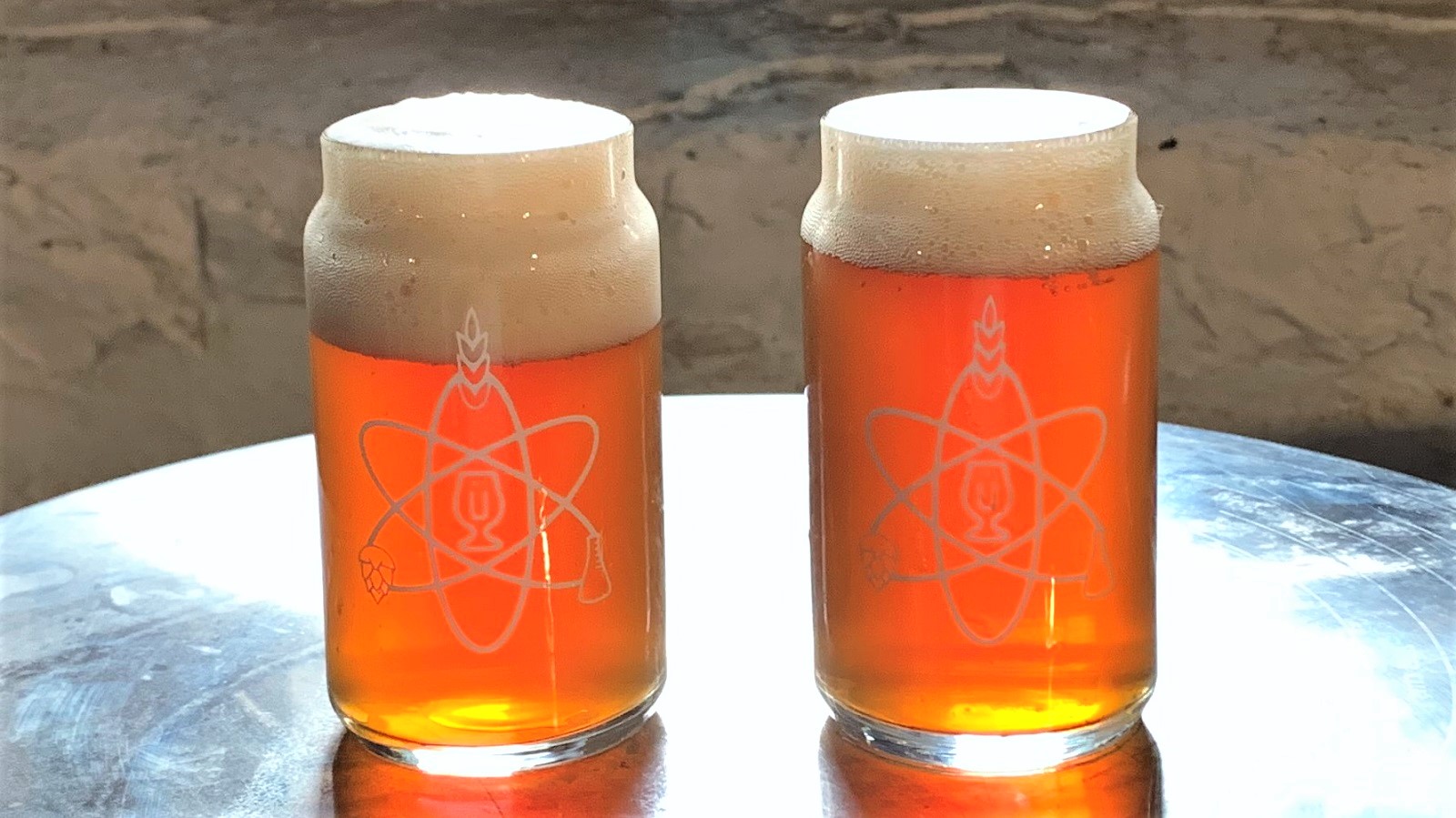
| RESULTS |
A total of 22 people of varying levels of experience participated in this xBmt. Each participant was served 2 samples of beer aged on oak spirals and 1 sample of beer aged on oak cubes in different colored opaque cups then asked to identify the unique sample. While 11 tasters (p<0.05) would have had to accurately identify the unique sample in order to reach statistical significance, 12 did (p=0.013), indicating participants in this xBmt were able to reliably distinguish a Barleywine aged on oak spirals for 6 weeks from one aged on oak cubes for the same amount of time.
The 12 participants who made the accurate selection on the triangle test were instructed to complete a brief preference survey comparing only the beers that were different. A total of 4 tasters reported preferring the beer made with oak spirals, 2 liked the oak cubes beer more, 5 had no preference despite noticing a difference, and 1 reported perceiving no difference.
My Impressions: Out of the 5 semi-blind triangle tests I attempted, I chose the odd-beer-out 4 times. To me, the beer made with oak spirals had much more up-front oak flavor and aroma, so much so that it was a bit off putting at first. Interestingly, I also perceived it to have more grapefruit flavor. That said, both beers were very drinkable despite being very woody and very boozy.
| DISCUSSION |
Various barrel alternatives are available to those brewers who may not have the space for an actual barrel, or who just want to hasten the wood-aging process. Both Oak Infusion Spirals and oak cubes are inexpensive options that are known to impart desirable wood characteristics to beer, though despite their similarities, some claim they contribute distinct differences. Indeed, tasters in this xBmt were able to reliably distinguish a Barleywine made with spirals from one made with the same amount of cubes.
A common topic when it comes to using barrel alternatives is surface area, which may provide a plausible explanation for these results. Whereas oak cubes have 6 flat surfaces that maintain contact with the beer, Oak Infusion Spirals were specifically designed to increase surface area such that more of the wood touches the beer during aging. What’s more is that there is some degree of penetration of beer into the oak, which can be difficult to account for when considering surface area to volume ratio in both spirals and cubes. On the other hand, despite both types of oak being of the same region and toast level, they were not produced by the same manufacturer, which may also have contributed to the perceptible difference.
More often than not, I’m looking to shorten the turnaround time of beers I brew, and while I expect wood-aged beers to require some aging, oak alternatives really do seem to reduce the time needed to extract the desired characteristics. While both beers in this xBmt had noticeable levels of oak, I had a slight preference for the one made with oak spirals and will be using them in the future.
If you have any thoughts about this xBmt, please do not hesitate to share in the comments section below!
Support Brülosophy In Style!
All designs are available in various colors and sizes on Amazon!
Follow Brülosophy on:
FACEBOOK | TWITTER | INSTAGRAM
If you enjoy this stuff and feel compelled to support Brulosophy.com, please check out the Support page for details on how you can very easily do so. Thanks!




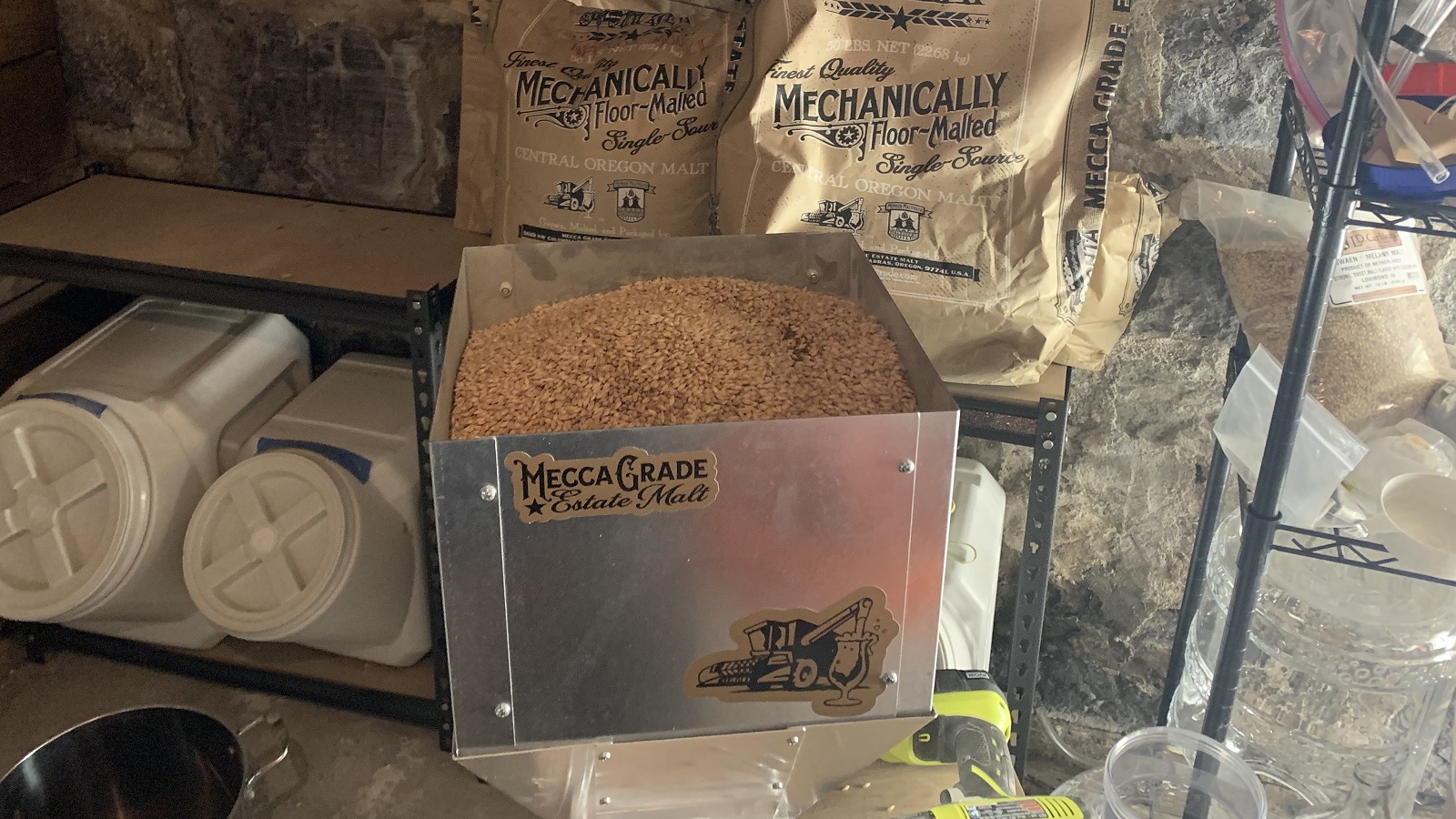
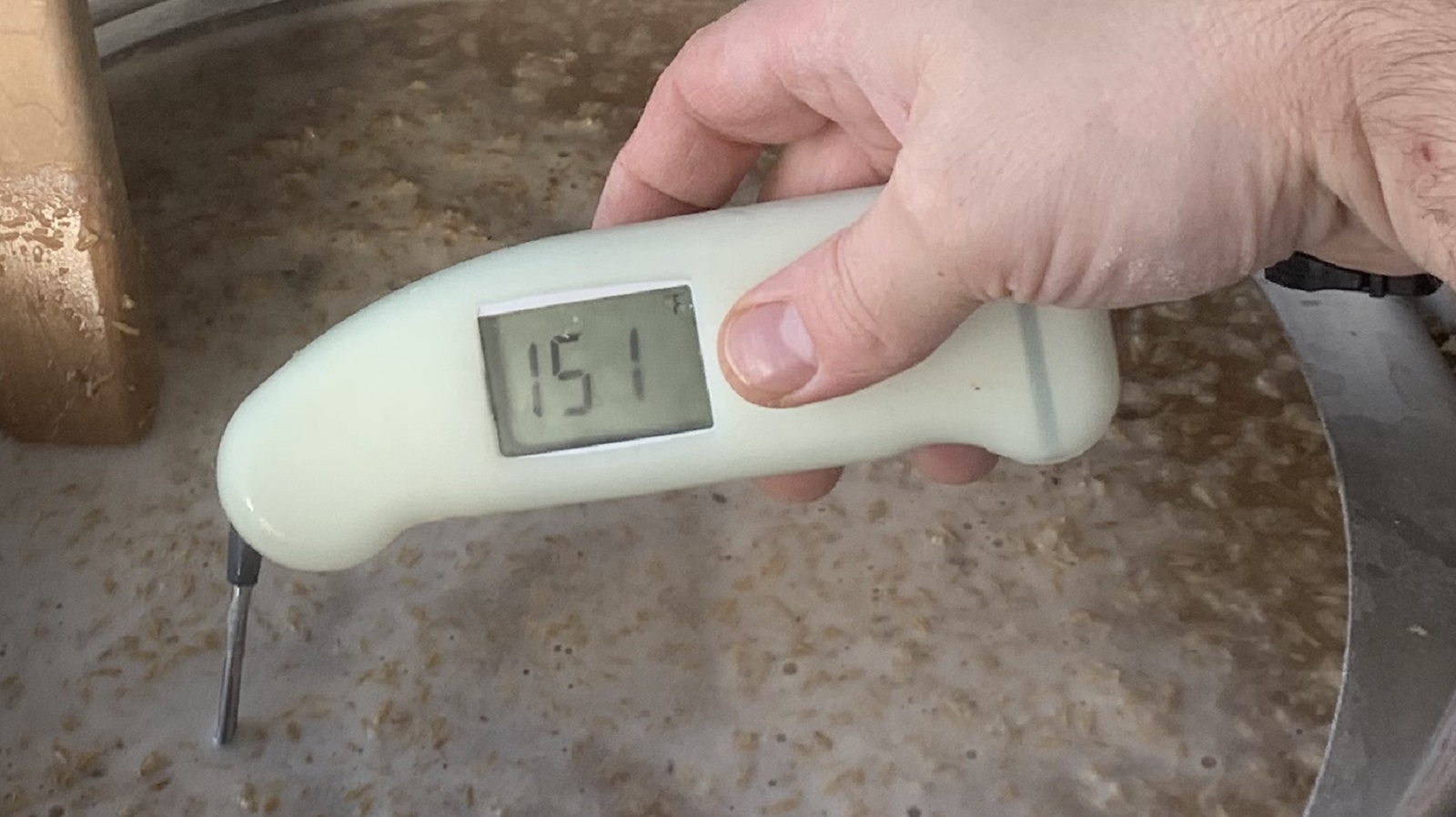
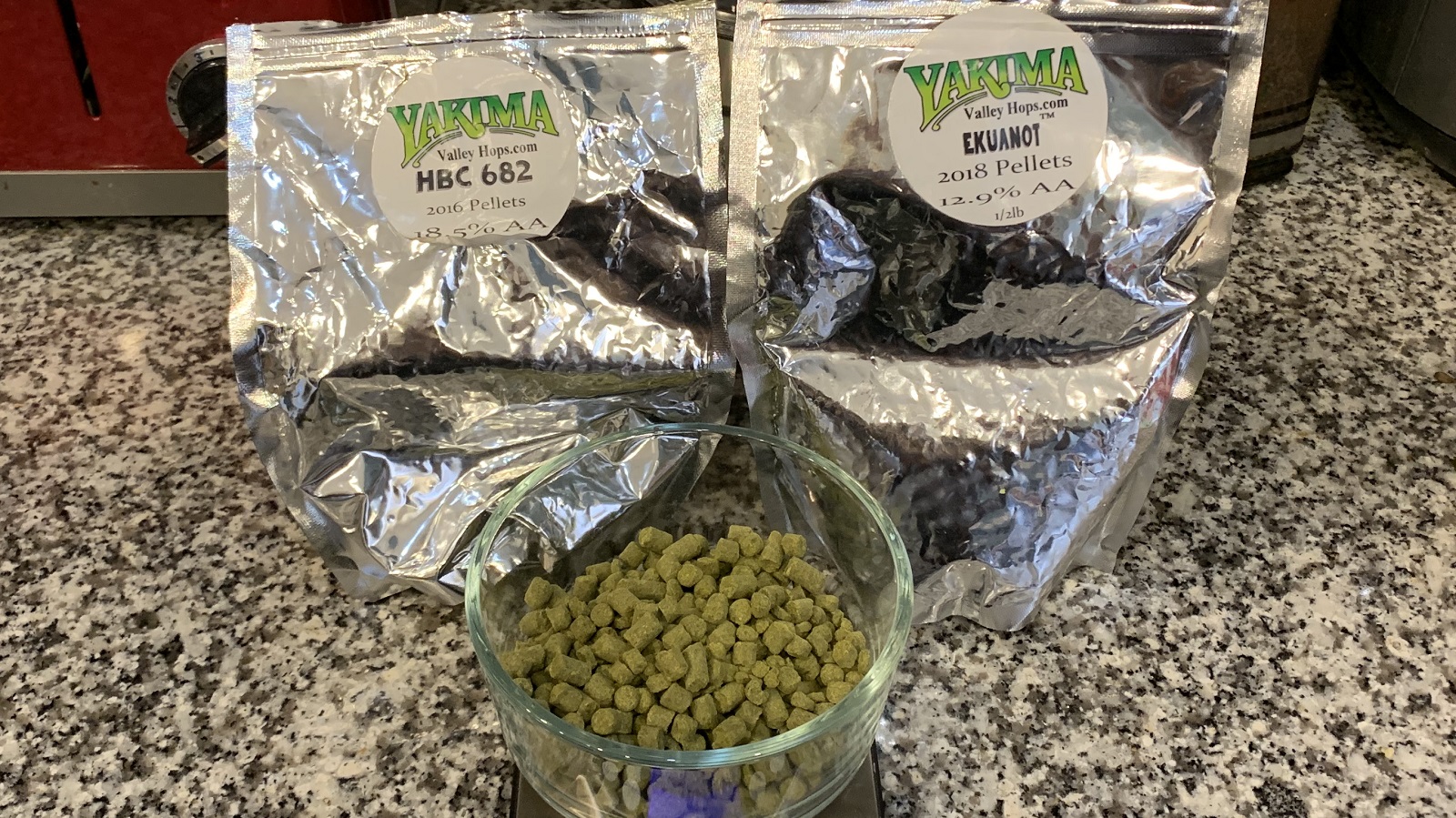
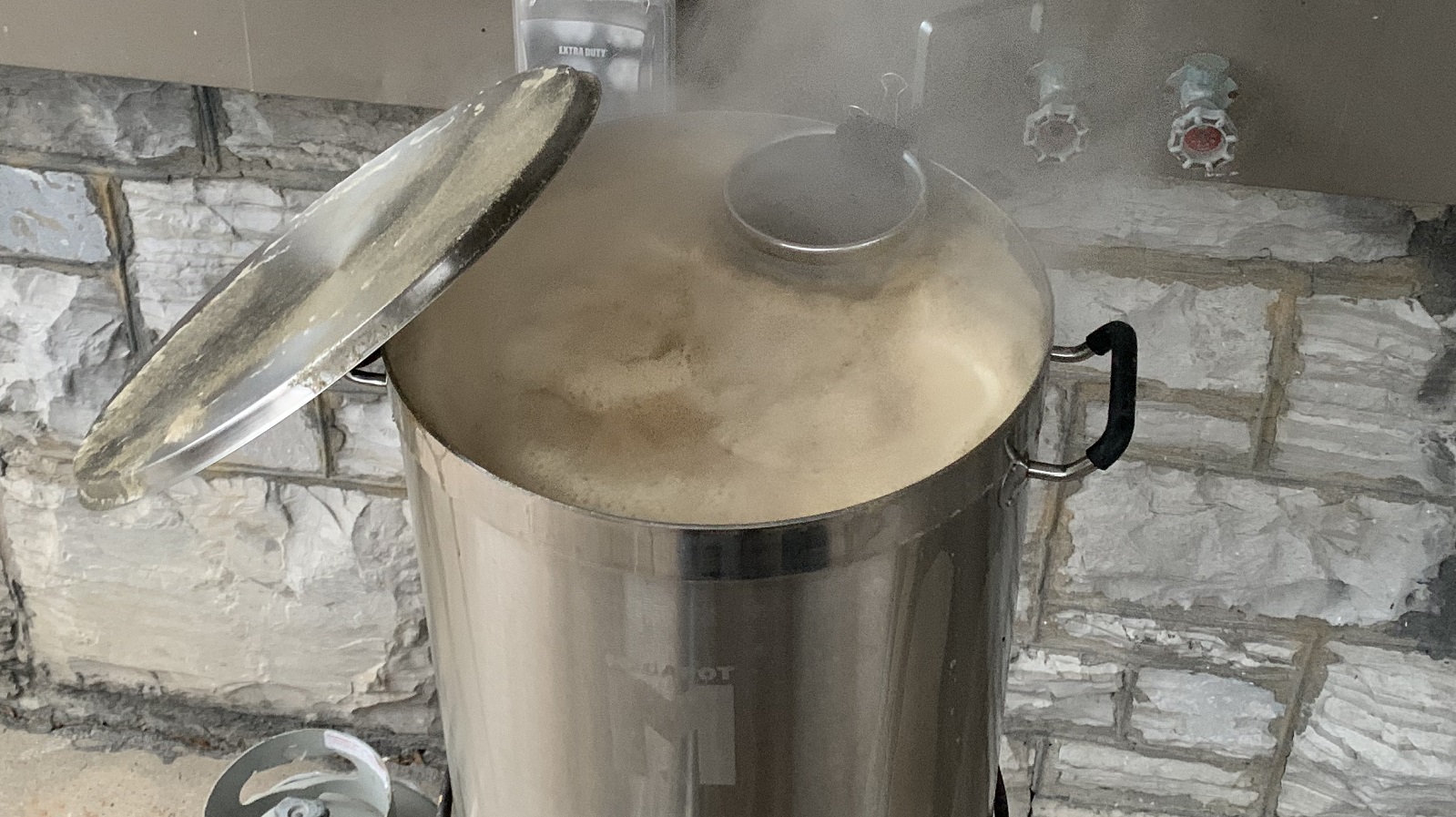
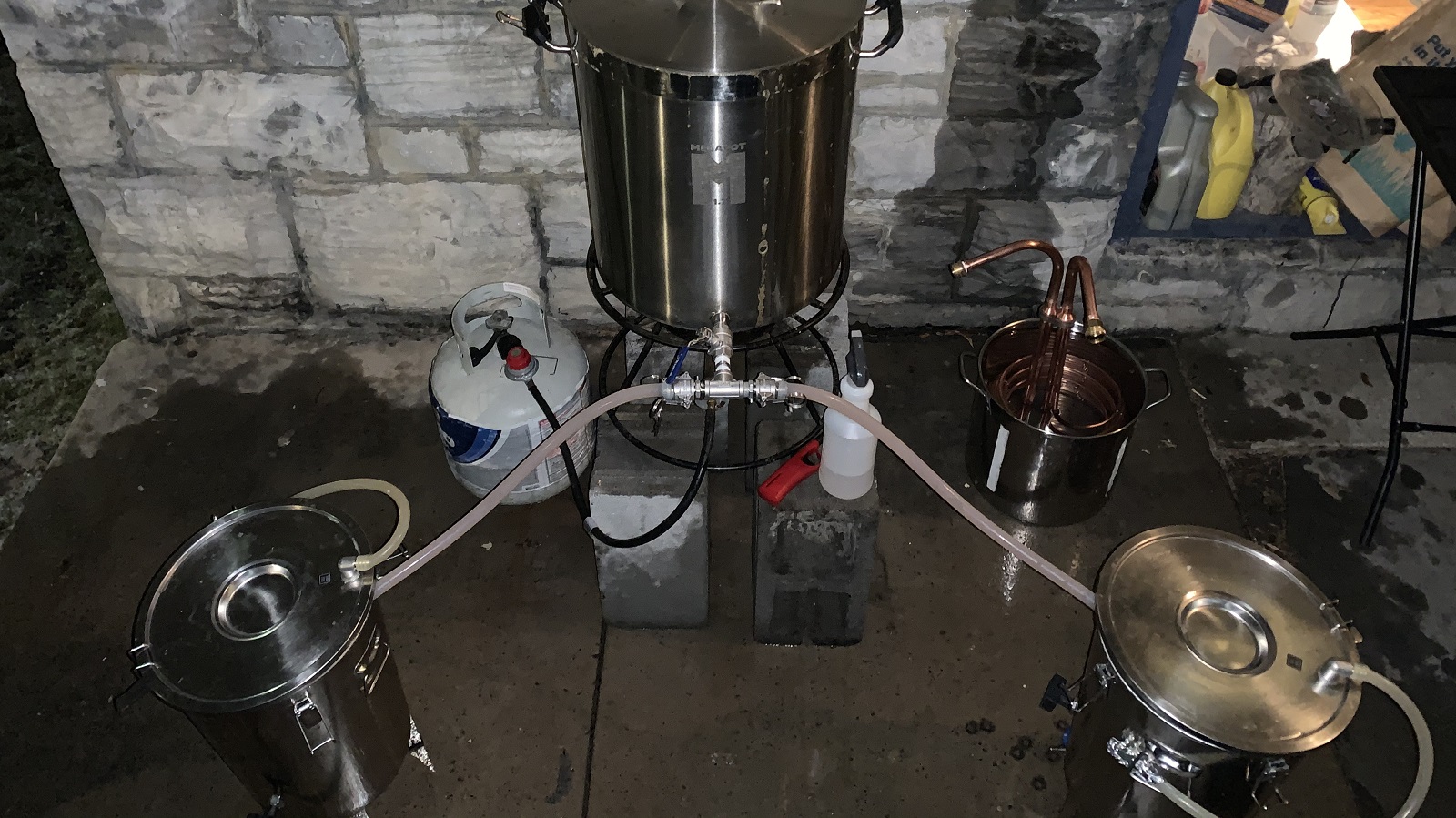
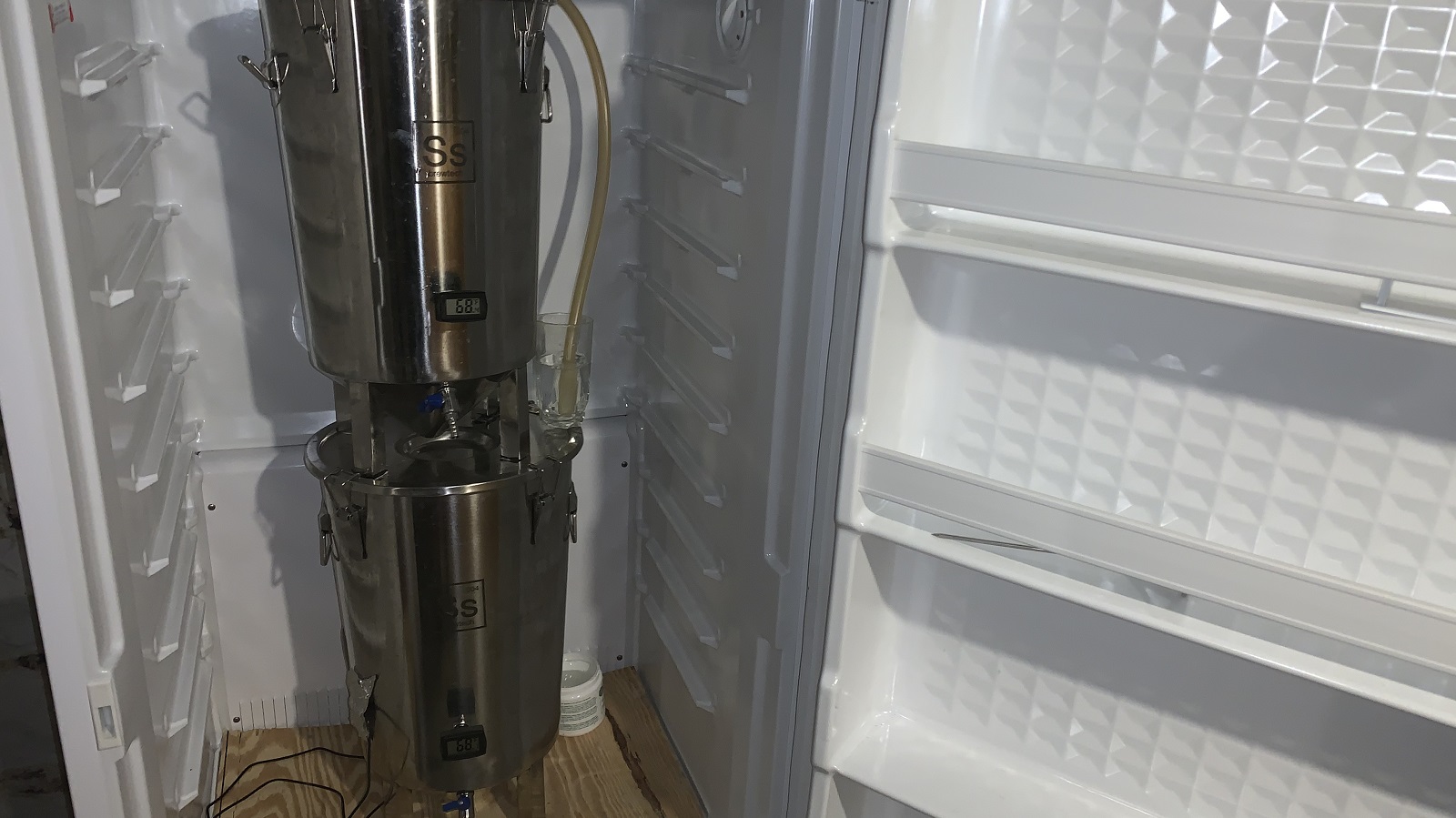
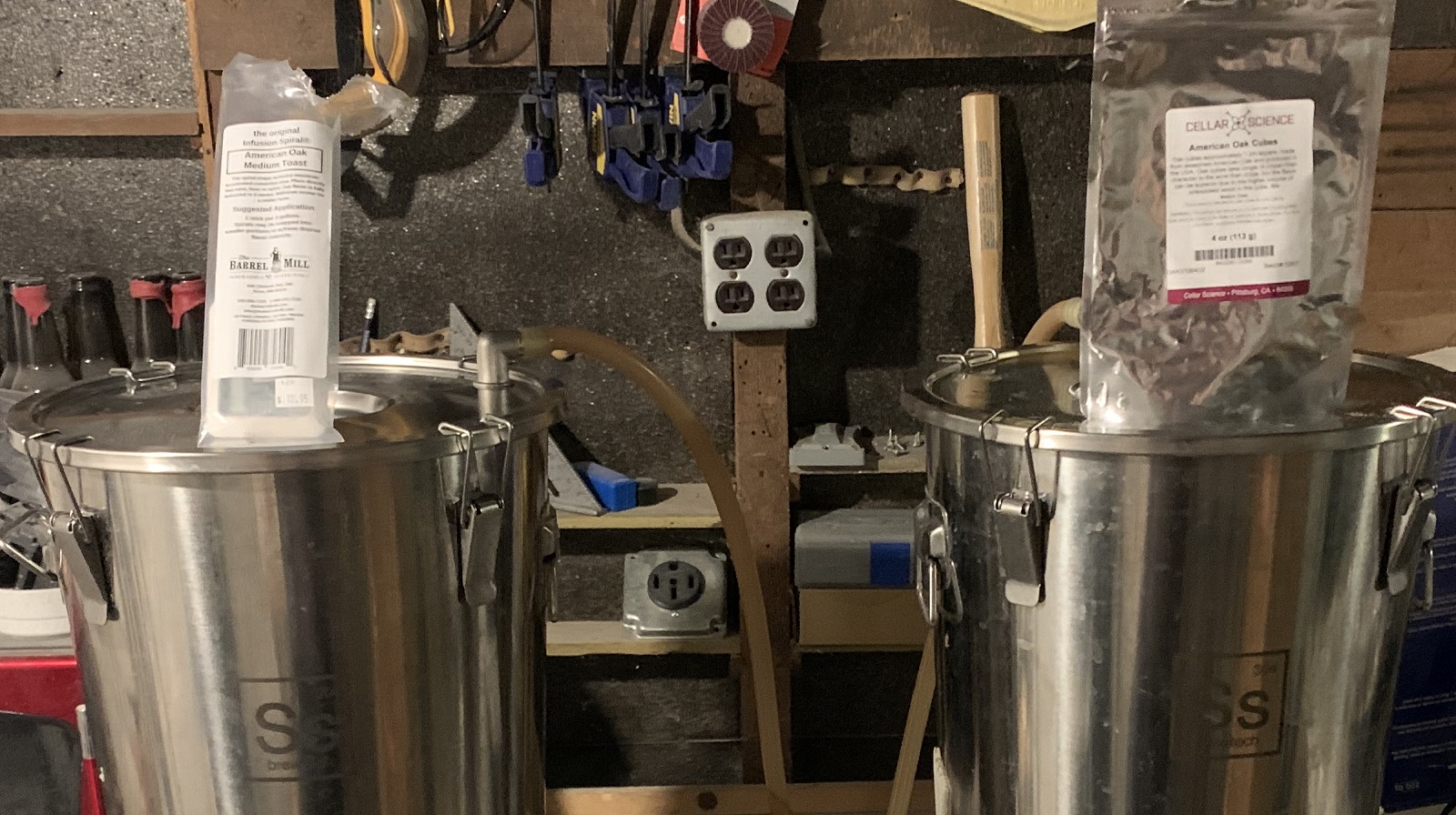
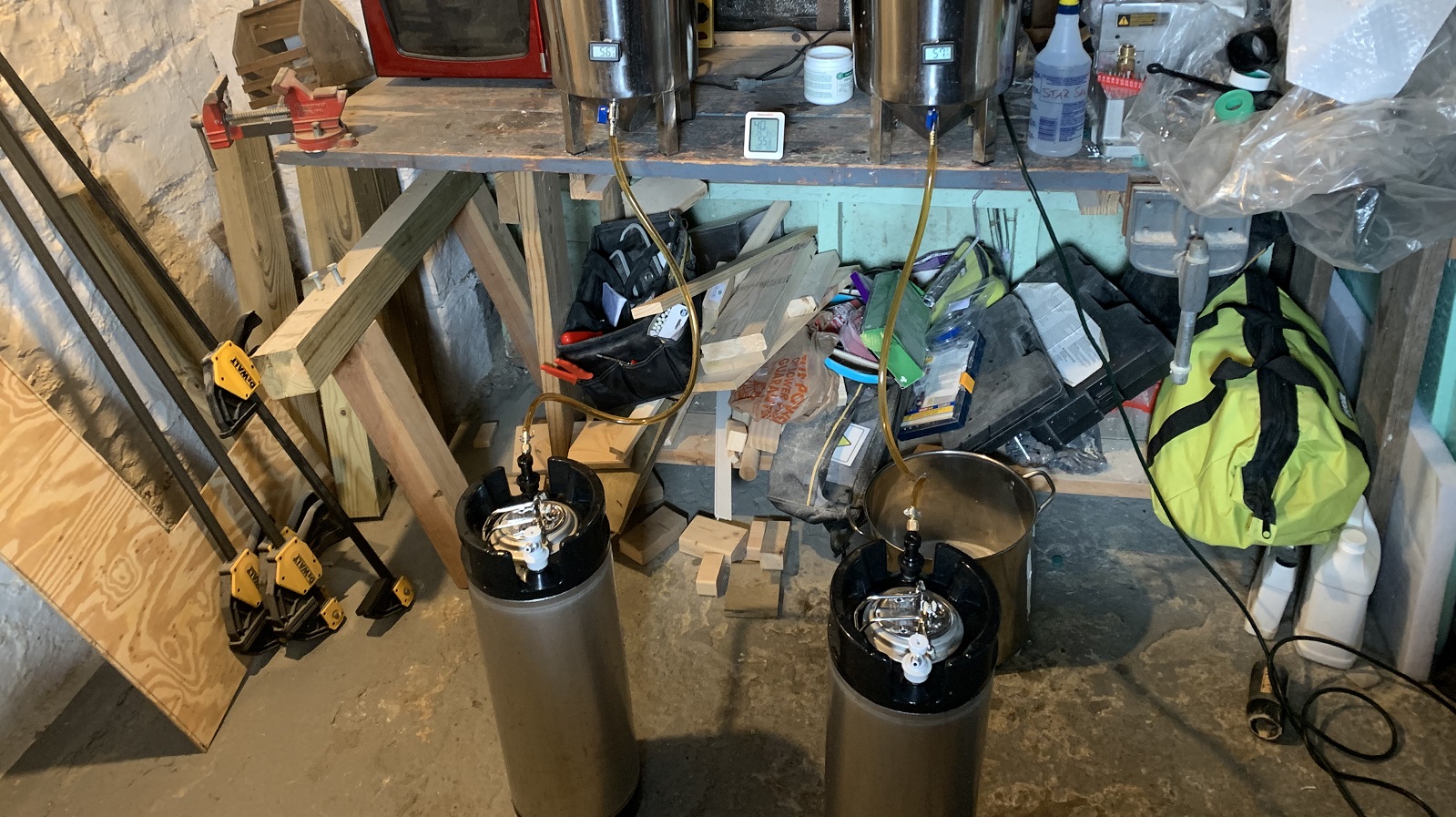











16 thoughts on “exBEERiment | Brewing With Wood: Oak Infusion Spirals vs. Oak Cubes In American Barleywine”
Hi Phil,
Did you age the beer with the oak (and the trub) for 6 weeks in the primary fermenter, or did you rack before adding oak?
-Lee
I left the beer in the FVs until kegging; there was no prior racking.
Nice article. That reminds me to keg my stout that’s been sitting on spirals for a little over six weeks. But you say that cubes have have four sides but it’s six sides.
Cheers
Ha! Yeah, fat fingers like to type numbers poorly. Thanks, friend.
Will you reuse the spirals & cubes? or are they a one time use type of item?
Between the relatively low cost and diminishing returns on wood, no, I’ve never reused wood for subsequent beers.
If oak cubes are old staves cut up into small pieces, are they sort of recycled or second use oak? Presumably the spirals are new oak. This difference, I imagine, would cause a flavor difference (maybe the more aggressive oak flavors you detected).
One reason to age beer in barrels is for the other wild/sour/brett cultures. Could you get the same effect from cubes or spirals if they are reused? How would you store them to maintain these cultures?
Unless otherwise specified, the wood aging products like cubes, spirals, and chips are virgin, meaning they haven’t been used for spirits or wine or whatever else. There are many reasons why distillers and winemakers have to get rid of their barrels after using them once, but one reason is that there are diminishing returns on how much flavor the barrels can impart after they are used, and the same is true for these smaller products for our scale. If you are reusing the wood without sanitizing them then you will certainly carry over whatever microorganisms were originally present.
I agree with the above posts. If you’ve ever visited a whiskey distillery in Scotland they will tell you that although a barrel may be used as much as half a dozen times to age whiskey, each time the barrel is disassembled and the Interior oak surface is shaved down to expose new oak followed by charring. They will reuse the barrel until eventually the wood isn’t thick enough to support this process as you need a minimum thickness for a few reasons. When the barrel is dead (possibly after 50years!) It gets sold to be cut up into wood chips to, amongst other things, flavour beer for homebrew!
So if you ever buy whiskey wood chips/cubes, don’t feel bad about not reusing them…they’re probably older than you are!
Any thoughts on making an oak tincture? I’m thinking of trying that out after hearing your most recent podcast to them use to add to my homemade wine.
My experience with an oak tincture is limited to a single event, so I can’t speak beyond that. The short version of this story is that I forgot about oak I was storing in vodka (it was in a mason jar for over a year) and I added it to a beer I made in the fall. I hardly got any oak character in the beer.
Ive been charring my oak cubes before using to simulate the inside of a barrel. Might be a future wood experiment..charred vs uncharred.
I used rum soaked oak cubes last year to treat an oatmeal stout. I left them in until samples gave the result of too much oak flavor. Then I bottled and waited. Six months later they were mellow and widely approved. Yours will likely mellow over time too.
What is the temperature used for the contact of the beer with the oak spiral? Thanks.
Both beers were left at my ambient basement temperature, which fluctuated between 51-60 Fahrenheit.
So you just did cubes and spirals straight up, not soaked in bourbon? I love bourbon barrel stuff. I wonder how different it would be if you soaked the wood in bourbon before adding. I just used spirals for the first time. Even though I soaked them for a month in bourbon I got mostly wood in the finished beer. Like chewing on a board. Not much in the way of bourbon, vanilla, and all that. I’ve made a few good bourbon barrel brews with oak cubes in the past. I don’t know why but it seems I got decent bourbon vanilla oak flavors with the cubes, but not so much with the spirals. I used 2 kinds of spirals in different beers – french oak and American oak, medium toast. So far I’m not a fan of the spirals. Disappointed with the results as to what I expected.